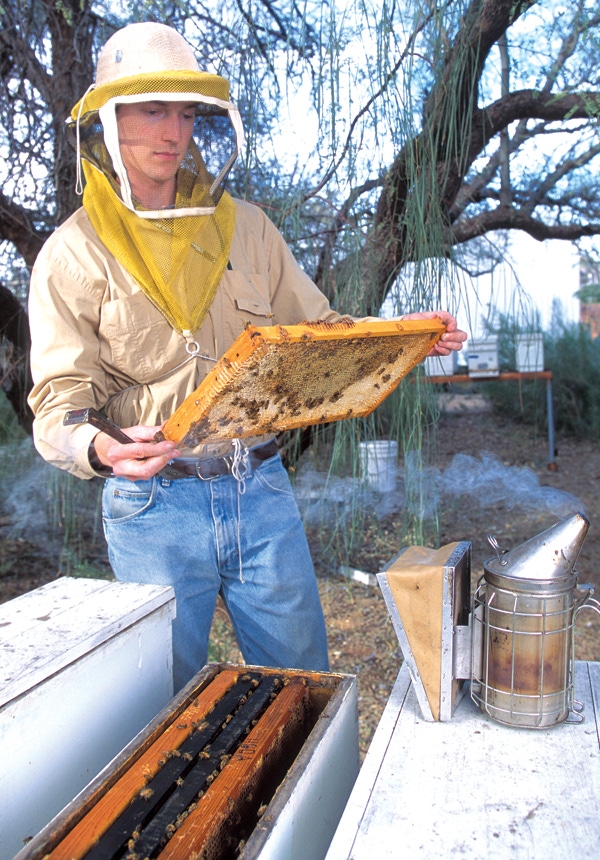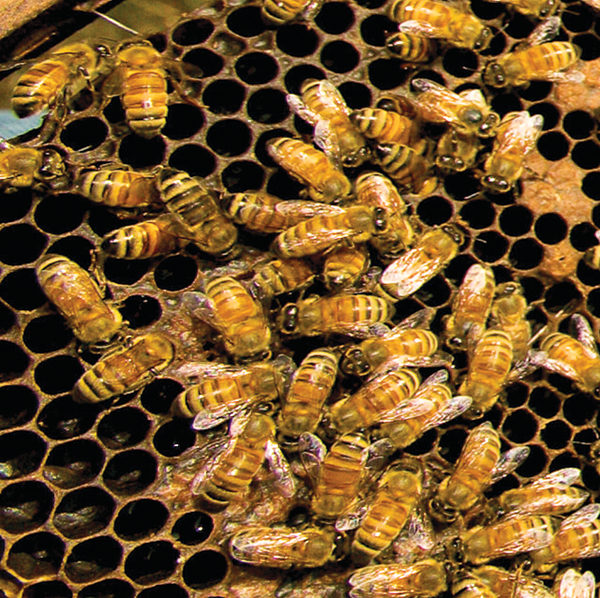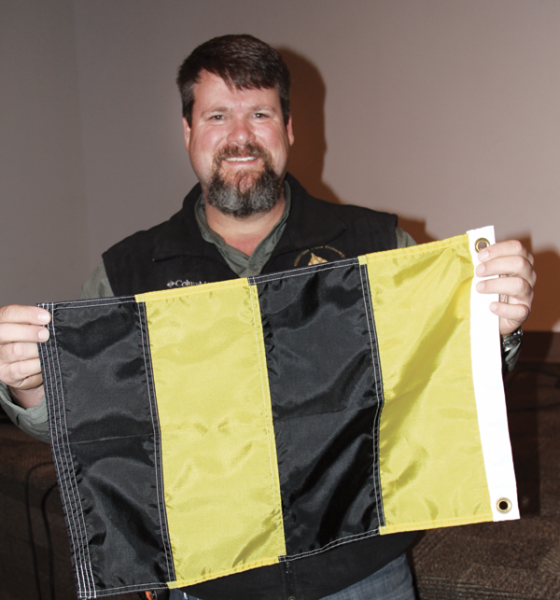
The goal of the Mississippi Honeybee Stewardship Program is for all beekeepers, farmers, and other pesticide applicators to provide added safeguards to protect bees in areas of pesticide use, says Randy Knight, president of the Mississippi Farm Bureau Program, which is leading the cooperative effort with other farm organizations in the state.

As the new crop season gets under way, several farm organizations, led by the influential Mississippi Farm Bureau Federation, have joined with the Mississippi Beekeepers Association in the development of a stewardship program to protect honeybees.
The effort will include an intensive distribution of brochures containing guidelines for the program.
“The Mississippi Honeybee Stewardship Program is the result of a series of collective discussions among stakeholders to find ways of fostering a better working dialogue among the state’s row crop farmers and beekeepers, all in the spirit of coexistence and cooperation,” says Randy Knight, MFBF president.
“These deliberations led to a set of standards or general operating suggestions targeting the state’s beekeepers, farmers, and other pesticide applicators.”
The Farm Bureau and other cooperating organizations will begin distributing brochures containing “a basic guideline for cooperative standards that should exist between row crop farmers and beekeepers when bees are located in or near row crop production areas.”
AG NEWS delivered daily to your inbox: Subscribe to Delta Farm Press Daily
While it isn’t intended to account for all aspects of the relationship between farmers and beekeepers, Knight says, it will serve for a broad distribution of the program’s basic concepts.
Partner organizations, in addition to Farm Bureau and the beekeeper association, are Mississippi Agricultural Aviation Association, Mississippi Agricultural Consultants Association, Mississippi Agricultural Industry Council, Mississippi Department of Agriculture and Commerce, and Mississippi State University Extension Service.
Unified flagging system
“As conceptualized and developed by Mississippi Farm Bureau, a unified flagging system will be utilized in the state to clearly identify hive locations that are near adjacent fields,” Knight says.

MISSISSIPPI’s Honeybee Stewardship Program is aimed at being the first step in the state taking a proactive role in advancing educational efforts that will lead to sustainable practices that are beneficial to both beekeepers and producers. — USDA/ARS photo
“This ‘Bee Aware’ flag should be placed in a location that can be highly visible by farmers operating ground-driven equipment or by aerial applicators. The flag will serve as a constant reminder that bees are in the vicinity that and care should be taken with insecticide applications.”
Beekeepers should work with farmers to select the best area near the hive to place the flag so it will be visible by both ground and aerial applicators, Knight says.
“We’re particularly appreciative of Bayer CropScience and the Monsanto Company for additional support of the Bee Aware flag program.
“We hope this will be the first step in Mississippi being proactive in advancing educational efforts that will lead to sustainable practices that are beneficial to both beekeepers and producers. We urge everyone in agriculture to support this program.”
As the brochure points out, cooperation between farmers and beekeepers will require communication and education.
Exchange basic info
“Farmers and beekeepers are encouraged to foster a strong level of communication with each other during any cooperative arrangement. Both should exchange very basic information: name, phone number, location of hive(s) on the farm, crops grown in the fields adjacent to haves, and general information about insecticides to be applied on those crops during the normal growing season.
“Cooperators are encouraged to have open dialogue about this information each year in order to foster a strong level of communication.”

ANGUS CATCHOT, Mississippi Extension entomologist, displays the Bee Aware flag that farmers are being urged to display near beehives in order to protect the pollinators from insecticide applications.
Choose locations carefully
“The beekeeper knows the best honeybee habitats and can help to select a location that (a) uses natural barriers, such as treelines, to mitigate against exposure to insecticide drift, (b) will best facilitate the entranced to hives being placed away from fields, and (c) is not too close to the immediate edges of fields. Beekeepers should discuss the bee yard or apiary location with the farmer and come to an agreement that works for both parties.”
Also, the beekeeper should have a placard on a prominent hive within an apiary that “clearly identifies the owner of the hives, along with emergency contact information.” The placard “should be highly visible from a distance.”
The beekeeper should work with the farmer to select the best area near an apiary to place the Bee Aware flag so it is visible to both ground and aerial applicators.
Both the beekeeper and the farmer should generate and review a comprehensive list of all apiary locations that occur on the farm property each year. “This is especially important if hives are moved from more traditional locations of several years to newer locations. It might be helpful also to pencil in apiary sites on a map.”
Beekeepers are also encouraged to provide GPS coordinates to the farmer and his applicator(s) to show exact locations of hives on the farm property.
Farmers should make their employees or other contractual parties aware of all apiary locations and the associated Bee Aware flags on the farm property, and should notify their aerial applicator of apiaries on the farm.
When possible, farmers should consider applying insecticides as late in the afternoon as feasible on fields immediately adjacent to hive locations in order to help mitigate many of the risks of damage to bees. Insecticide applicators should always follow label guidelines and applications should be made when pests reach economic threshold levels.
Insecticide applications should be made only when winds are blowing away from hive locations.
For specific questions about the Mississippi Bee Stewardship Program, contact Dr. Jeff Harris, Mississippi State University Extension apiculturist, 662/325-2976; Dr. Angus Catchot, MSU Extension entomologist, 662/325-2085; Dr. Jeff Gore, MSU research and Extension entomologist, 662/820-9969; the Mississippi Bureau of Plant Industry, 662/325-3390; or Vicki Morgan, executive director, Mississippi Agricultural Aviation Association, 662/299-7836.
About the Author(s)
You May Also Like



